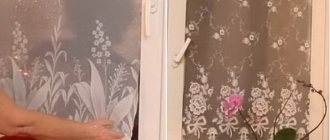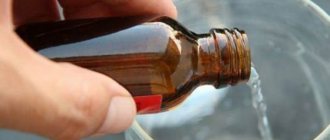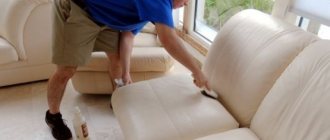It has long been noted that fabric in the interior makes it softer and more comfortable. That is why weightless translucent tulle has thoroughly settled on the windows of Russian apartments, bringing home comfort and pleasing the eyes of housewives. Moreover, it is the light shades of the curtain that have won special love, because the light from the window softly diffuses throughout the room, while leaving it sufficiently illuminated.
However, over time, light tulle loses its luster and whiteness, and frequently updating window textiles is a significant blow to the wallet. Therefore, housewives use a trick, because they can bleach tulle at home, eliminating the grayness and yellowish tint, and even save the family budget.
Why does tulle turn yellow?
Much to our chagrin, light-colored fabrics fade over time and lose their dazzling whiteness. Kitchen tulle often turns yellow, even if the room is regularly cleaned. Among the factors for the appearance of yellowness are the following:
- prolonged exposure to sunlight;
- dust and soot from the street;
- steam and microparticles of fat from the kitchen;
- tobacco smoke.
If the tulle has turned yellow, it is possible to correct the situation if you periodically take care of the window decor.
Preparing for whitening
It is better to start the bleaching process with preparation - this will allow you to wash the dirt from the fibers and achieve a better effect:
- Assess the degree of contamination and the presence of stubborn stains. If the tulle is too dirty to bleach it, you will have to use several methods.
- Check the composition of the tulle. Natural cotton curtains can be washed at high temperatures, while synthetic curtains cannot tolerate water above 40 °C.
- Decide on the washing method: it will be done manually or in an automatic machine. Both options give results, but each has its own characteristics.
- For optimal results, the tulle should be shaken out of dust outside and then soaked for several hours in warm soapy water before the main wash.
Hydrogen peroxide and ammonia
These components help remove yellow stains from tulle. The curtains must be pre-wetted and then immersed in a pre-mixed solution. It should consist of 40 grams of laundry detergent, 7-9 liters of water and a couple of tablespoons of hydrogen peroxide and ammonia. To completely remove stains, tulle should remain in this mixture for about 4 hours.
Traditional methods
Despite the abundance of household chemicals on supermarket shelves, many prefer to use time-tested methods and bleach tulle with improvised means at home. The result is often quite worthy.
So what did our mothers and grandmothers use to give their curtains a fresh look?
Ammonia + hydrogen peroxide
This mixture is often used to eliminate yellowness on white fabrics, so it may well whiten tulle.
Important! The mixture effectively bleaches only cotton! The method is not suitable for use on synthetic fabrics.
To effectively and evenly rid tulle of yellowness, it is important to observe the proportions:
- 1 part ammonia;
- 2 parts peroxide 3%.
For 10-15 liters of warm water, take 1 tbsp. l. alcohol and 2 tbsp. l. peroxide, the solution is thoroughly mixed, then the curtain is immersed in it and left to soak for 30-60 minutes to whiten it. For more effective washing, you can prepare a soap solution instead of warm water. Next, the product is thoroughly rinsed and dried.
Salt
There is a way to bleach tulle with ordinary table salt. In this case, you can use salt water for preliminary and main washing:
- Dissolve grains of salt in warm water (45 °C) in a ratio of 1 tbsp. l. per 1 liter of liquid (you can increase the concentration in case of significant contamination).
- Add your usual detergent.
- Soak the canvas for several hours, turning it over periodically.
- Allow the water to drain and then wash as usual.
Soda + washing powder
You can use regular baking soda as a bleaching additive during washing. The accessibility and simplicity of this method made it popular among housewives.
You can bleach yellowed tulle as follows:
- Add soda and washing powder to warm water in the ratio: 50 g of soda, 100 g of powder per 10 liters of water, then mix thoroughly.
- Immerse the tulle in the prepared solution and soak for 1-2 hours (if heavily soiled, you can leave it overnight to get rid of the grayness).
- Wring out the curtain and then wash it by hand or in an automatic machine.
Blue
Our grandmothers used this product to give linen and curtains a fresh look. The bottom line is that blue effectively masks yellowness, giving white tulle a beautiful tint. The main thing is not to overdo it with bluing.
Advice : such a product is very rare in household chain stores, so it is better to look for bluing in markets or in small departments of household chemicals.
Procedure:
- Prepare the solution according to the instructions indicated on the product packaging. You can add 0.5-1 tsp to warm water. blue for a 10-liter basin. Mix thoroughly until the paint is completely dissolved.
- To fix the color, you can add a little table vinegar to the solution.
- Rinse the washed tulle in the resulting liquid and hang it to dry.
Zelenka
If you still can’t get the blue, you can bleach the yellowed tulle using regular green paint. The principle of operation is similar, only this time a little brilliant green is added to warm salt water until completely dissolved. The curtain is rinsed and hung to dry.
Laundry soap
Laundry soap has long been famous for its stain remover properties, and when washed at high temperatures it can effectively whiten light-colored fabrics and eliminate yellowness.
Important! Washing and bleaching with laundry soap are suitable for products made from natural fabrics!
- The soap is crushed using a grater or a knife, and then poured into hot water with the addition of powder.
- The tulle is soaked in the solution for several hours. If desired, problem areas are rubbed with a bar of soap and soaked. If necessary, use a soft brush.
- After thorough rinsing, grayed tulle takes on a fresh, attractive appearance.
Starch
The bleaching properties of starch are not so strong, and it will only help with slight yellowing of window curtains. However, it has a very useful property - after washing, the fabric becomes elastic, keeps its shape and is less susceptible to contamination.
Only cotton tulle should be starched:
- Starch is dissolved in warm water or a paste is boiled at the rate of 200-300 g of product per 10 liters of liquid. It is important to completely dissolve the powder without lumps appearing, and if necessary, strain.
- The product is placed in a starch solution and soaked (the tulle should be washed by hand or in a machine before this).
- The curtain is taken out and allowed to drain without squeezing, then straightened to avoid creases and left to dry.
Tip : light tulle can be hung wet on the cornice: this way it will straighten out and dry evenly.
Potassium permangantsovka
Potassium permanganate crystals can also be used to add freshness to light-colored curtains. Potassium permanganate, if the proportions are observed, allows you to make the tulle snow-white, refresh the color, and whiten it. However, such a simple remedy can now be called very rare.
Mode of application:
- Several crystals are dissolved in a small amount of warm water until a pale pink color is obtained.
- Diluted manganese is added to a warm soap solution and the tulle is soaked in it for several hours.
- After time, the tulle is washed, rinsed and dried.
Bleaches
In addition to “grandmother’s” methods, you can also pay attention to modern household chemicals. There is a large assortment of different bleaches on store shelves that effectively return light-colored fabrics to an attractive appearance and remove even stubborn stains.
However, it is better to bleach tulle using modern oxygen-containing products without chlorine. They work effectively, preserve the structure of the fabric and work even with synthetic fiber. In the process of reaction with water, hydrogen peroxide, soda and oxygen are formed, which, as is already known, can perfectly bleach yellowed and faded fabric.
Advantages of oxygen-containing bleaches:
- work with colored and synthetic fabrics;
- preserve the structure of the fibers;
- effective at low temperatures;
- do not require soaking;
- Can be used in any type of washing machine.
Among such means are the widespread and inexpensive “BOS”, “Antipyatin” or the more famous “Vanish”. Another option is to use any bleach for children's things - delicate care will be ensured.
Whitening tulle curtains at home, basic methods
You don't have to buy expensive household chemicals to turn old into new. It is enough to be smart and try to use the means at hand that every housewife probably has: soda, salt, brilliant green, potassium permanganate, starch. Let's look at how you can bleach gray or old tulle from yellowness and dirt at home.
Delicate, airy fabric fills the room with light, purity and radiance, so housewives will never give up white curtains for their home.
Why can't you use "Whiteness"?
Chlorine-based bleaches like the popular “Whiteness” are not the best solution for tulle. Despite their effectiveness and seemingly flawless results when first used, such products have a number of disadvantages, including:
- aggressive whitening. Chlorine has a destructive effect on the fibers of the material, as a result of which the tulle becomes thinner and breaks;
- persistent appearance of yellowness after several washes. The snow-white effect quickly fades away, and with regular use a yellowish tint appears.
In priority, the yellowness should be completely eliminated and not fixed, so it is not recommended to use chlorine-containing products to lighten tulle curtains.
Bleaching tulle with potassium permanganate
Back in the old days, our grandmothers did not have the opportunity to purchase whiteness, so they used what they had at hand. And everyone had potassium permanganate, with the help of which they bleached the tulle. In our time, this method has also been preserved. For a solution per 15 liters of water, you need half a glass of soluble potassium permanganate. Mix everything well. Before dipping the tulle into a solution of potassium permanganate, it must be rubbed with ordinary soap. Then we lower it into a bucket or container with potassium permanganate for 30 minutes. Then take it out, wash, rinse and dry.
How to bleach tulle in a washing machine?
To make tulle curtains white, hand washing is not the only way. You can achieve what you want, with less effort and time, by washing the tulle in a machine using oxygen-containing bleach.
Important! When bleaching fabric in an automatic machine, you should absolutely not use folk remedies to avoid damage to household appliances!
You should also adhere to the following recommendations:
- Follow the temperature regime when washing any fabrics – no higher than 40°C. Oxygen bleaches are effective at such temperatures, but synthetics can become deformed in hot water;
- set the mode “Delicate wash”, “Synthetics”, “Silk/Curtains”, wash at low speeds without spinning;
- fold the tulle into the drum to avoid creases;
- After draining the water, hang the washed curtains on the curtain rod in a damp state without ironing.
With the help of greenery
As strange as it may sound, with the help of greenery, knowledgeable housewives add emerald and white colors to their tulles. A solution of brilliant green is prepared as follows: dissolve 15 drops of brilliant green in a glass of water. Mix thoroughly and leave for fifteen minutes. If during this time no sediment appears at the bottom of the glass, then everything has been done correctly and you can start bleaching. But if sediment appears at the bottom of the glass, you should redo the solution.
Pour the solution into a container for rinsing tulle after washing. Place the tulle in the solution, spreading it evenly over the container. Then we take the tulle out of the solution, shake off excess water and dry it.
How to bleach old yellowed tulle?
Unfortunately, there is no guarantee that old tulle will return to its original whiteness after some manipulation. Still, time wears out any thing, and if the fabric is made of synthetic materials and has faded in the sun, it is easier to simply replace the tulle with a new and snow-white one.
In this case, you can try to bleach cotton curtains using already familiar methods, or combining them for greater effect:
- you need to remember that tinting substances such as blue and manganese only mask yellowness and do not eliminate it;
- After washing, to give elasticity and resistance to stains, you can rinse the tulle in starch or saline solution.
If you really want to, you can try to bleach and restore the old curtain to its original appearance by soaking it in a highly concentrated saline solution or warm water with soda (remember that the temperature should not exceed 40°C). In this case, you will need 1 kg of salt or 0.5 kg of soda per standard bucket of water (10 l). Leave for 1-2 hours.
Next, the tulle is thoroughly rinsed, loaded into the machine and washed on a delicate cycle without spinning with liquid detergent and bleach. At the end of the wash, straighten it, allow excess water to drain and hang it out for final drying.
Machine washable features
Household appliances of our time make the work of a housewife easier. Cleaning, brightening, and stain removal are performed by machines instead of humans. When choosing this method of maintaining cleanliness, use the following recommendations:
- Take care of the delicate wash cycle. Neatly folded fabric, placed in a laundry bag or white cotton pillowcase. Such packaging will prevent fraying of the edges and tearing of thin elements;
- It is preferable to use liquid detergent or concentrated special detergents for washing curtains and tulle;
- Do not use substances containing chlorine;
- Oxygen-containing bleach is a universal preparation that preserves fabric. We buy, read the manual and use it with confidence;
- You can add 2 tablespoons of salt into the compartment along with the washing powder. This will help lighten the fabric during the washing stage;
- Tulle bleaching is also possible using 10 tablets of hydrogen peroxide (pour the powder into the washing machine compartment and set the gentle wash mode);
- For spinning, select the minimum number of revolutions.
If you doubt the safety of washing, it is better to entrust the cleaning to professionals.
Modern automatic machines can significantly facilitate the housewife’s work
Features of fabric bleaching
Depending on the composition of the tulle, synthetic impurities, and decorative elements, the bleaching process can differ radically. Therefore, it is best to familiarize yourself a little with the intricacies before “reanimating” the canvas.
“Tulle” is a generalized name for almost weightless translucent fabric for window decoration, the composition of which can be natural or synthetic:
- Natural fabrics include fabrics woven from cotton, wool or cotton threads;
- synthetic tulle consists of threads of nylon, polyester and nylon.
Therefore, natural fabrics can be washed and bleached at temperatures above 40°C on a delicate cycle with the spin switched off or manually without sharp twisting. Synthetics require more gentle care, are very sensitive to hot water and wrinkle easily.
Also, according to the method of weaving, the following types of curtains are distinguished:
- grid – the name is “speaking”. This is really a curtain in the form of a mesh with cells of different sizes, it allows air to pass through well, but collects dust;
- muslin - flowing flagella with decorative weaves, similar to “rain”. It has a synthetic or natural base, is very light, transmits light and air flow well;
- organza is the most popular tulle, it allows light to diffuse, holds its shape well and drapes;
- a veil is an almost weightless translucent canvas that scatters light and traps dust from the street.
Capron
Tulle with synthetic threads is very capricious, so you can bleach yellowed nylon tulle using oxygen-containing bleach or a solution with salt. Washing is allowed with products for delicate fabrics that are effective in cold water.
Net
In this case, delicate washing and bleaching or the use of traditional methods is appropriate if the fabric has a natural composition.
Organza
Natural organza can be bleached using traditional methods, but do not forget about the special weave of the threads, which are afraid of twisting and sudden movements when washing. Synthetic organza tulle can withstand temperatures of no more than 40°C, does not tolerate ironing, and can be washed and bleached using gentle, chlorine-free products.
Chiffon
White chiffon on the window is a real example of comfort and an indicator of the housewife’s cleanliness, because it is quite difficult to care for such curtains. Thin, almost weightless, it is prone to tearing, so it is possible to bleach such a curtain in a machine only in the delicate mode (it is better to wash it by hand), and with folk remedies - in lukewarm water and with a reduced concentration of the active substance.
Veil
The features of bleaching voile tulle are similar to those of capricious synthetic materials. The main thing is to remember that the veil does not like hot water, steam, sharp twisting movements and aggressive chemicals.
Recommendations for different fabrics
For organza curtains, bleaching with starch is considered the most effective. This method will not only return their whiteness, but also get rid of all the folds and creases.
The salt method is more suitable for nylon and synthetic curtains.
The veil is bleached using hydrogen peroxide.
Cotton and linen curtains can be bleached in a variety of ways. The method with aspirin, salt and citric acid works well on these materials.
Methods with blue and green can be used for any type of fabric. A small amount of dye will optically make the material snow-white.
Recommendations for care and use
Every housewife who tries to create coziness and comfort in her home has a desire to prolong the attractive appearance of her favorite window curtains for as long as possible. You need to look at things soberly and understand that it is impossible to maintain the pristine whiteness of a product for many years even with careful care. Therefore, it is unlikely that it will be possible to remove the grayness and yellow coating on still Soviet tulle. Well, adding freshness and eliminating stains on a white curtain that is a couple of years old is a simple matter, but it requires time and labor.
To make window decor pleasing to the eye for as long as possible, it is advisable to adhere to the following recommendations:
- wash and (if necessary) bleach tulle once a season (spring and autumn);
- curtains made from natural fabrics are more expensive than synthetics, but are more wear-resistant and easy to care for, they can be washed at high temperatures with a wide range of detergents;
- synthetic tulle does not tolerate high temperatures and chlorine;
- It is better to spot wash individual stains;
- You can dry wet tulle directly on the cornice;
- Rinsing in a weak solution of vinegar or salt can add shine, elasticity and resistance to stains;
- Pre-washing is required for more effective bleaching.
Techniques for cleaning curtains and tulle
Airing is a simple and accessible method for cleaning and cleaning textiles. Opening a window or door for a while will saturate the atmosphere of the house with energy and the scent of cleanliness. Heavy _
It’s good to shake out old curtains outside.
Cleaning with a vacuum cleaner is suitable for curtains made of thick material. Use a special attachment for this so as not to spoil the fabric .
with a stiff brush.
If the vacuum cleaner does not come with an attachment, wrap a thin cloth around the brush and
secure it with an elastic band. Remember, you also need to clean the window side of the curtains. Frequency: twice a month.
But over time, curtains and tulle products can only be restored to their fresh appearance and whiteness by washing . It is impossible to unequivocally answer the question about the frequency of washing: in the kitchen and in houses located on streets with busy traffic, you need to wash often, where there is less dust - 2-3 times a year.











